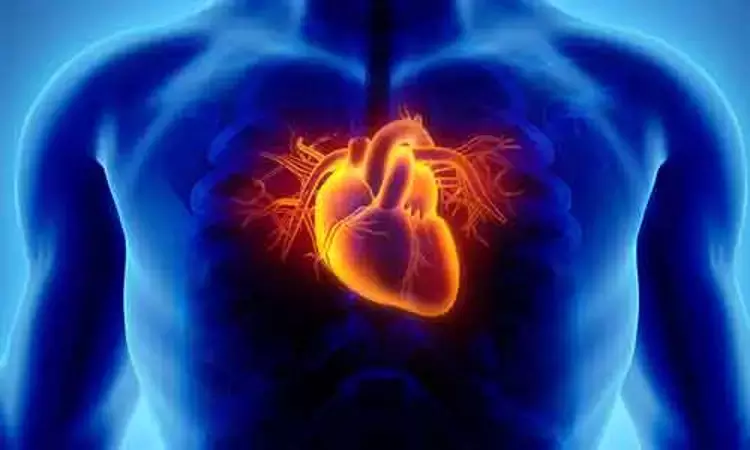- Home
- Medical news & Guidelines
- Anesthesiology
- Cardiology and CTVS
- Critical Care
- Dentistry
- Dermatology
- Diabetes and Endocrinology
- ENT
- Gastroenterology
- Medicine
- Nephrology
- Neurology
- Obstretics-Gynaecology
- Oncology
- Ophthalmology
- Orthopaedics
- Pediatrics-Neonatology
- Psychiatry
- Pulmonology
- Radiology
- Surgery
- Urology
- Laboratory Medicine
- Diet
- Nursing
- Paramedical
- Physiotherapy
- Health news
- Fact Check
- Bone Health Fact Check
- Brain Health Fact Check
- Cancer Related Fact Check
- Child Care Fact Check
- Dental and oral health fact check
- Diabetes and metabolic health fact check
- Diet and Nutrition Fact Check
- Eye and ENT Care Fact Check
- Fitness fact check
- Gut health fact check
- Heart health fact check
- Kidney health fact check
- Medical education fact check
- Men's health fact check
- Respiratory fact check
- Skin and hair care fact check
- Vaccine and Immunization fact check
- Women's health fact check
- AYUSH
- State News
- Andaman and Nicobar Islands
- Andhra Pradesh
- Arunachal Pradesh
- Assam
- Bihar
- Chandigarh
- Chattisgarh
- Dadra and Nagar Haveli
- Daman and Diu
- Delhi
- Goa
- Gujarat
- Haryana
- Himachal Pradesh
- Jammu & Kashmir
- Jharkhand
- Karnataka
- Kerala
- Ladakh
- Lakshadweep
- Madhya Pradesh
- Maharashtra
- Manipur
- Meghalaya
- Mizoram
- Nagaland
- Odisha
- Puducherry
- Punjab
- Rajasthan
- Sikkim
- Tamil Nadu
- Telangana
- Tripura
- Uttar Pradesh
- Uttrakhand
- West Bengal
- Medical Education
- Industry
COVID-19 patients may show false signs of acute MI: Mayo Clinic guidance

ROCHESTER, Minn. — Many studies have shown that people with cardiovascular disease are at greater risk of COVID-19.
There also have been reports of ST-segment elevation (STE), a signal of obstructive coronary artery disease, in patients with COVID-19 who after invasive coronary angiography show no sign of the disease. This false signal of coronary artery disease may cause patients to undergo procedures that present unnecessary risks, especially in the COVID-19 environment, according to a special article published in Mayo Clinic Proceedings.
The article, written by a team of Mayo Clinic cardiologists and radiologists, proposes algorithms for evaluating patients and determining a course of treatment.
"The impact of false activation of the catheterization laboratory includes inherent risks, beginning with the invasive arterial procedure itself and related care for these patients," says J. Wells Askew, M.D., a Mayo Clinic cardiologist. In cases where patients test positive for COVID-19, the risks include respiratory failure, and potential exposure of medical staff and the downstream effects on cardiac catheterization laboratories and cardiac imaging services.
"Nonetheless, it's critically important for patients who are experiencing a heart attack due to coronary occlusion to receive immediate and appropriate treatment," says Dr. Askew. "There is an urgent need for an algorithm that guides triage of patients with suspected or proven COVID-19 patients with STE to determine initial invasive or noninvasive pathways."
The article notes that acute myocardial injury, arrhythmia and shock are common in patients with acute respiratory infections such as COVID-19. Myocardial injury is defined by an elevated cardiac troponin level; when myocardial injury is acute and occurs in the setting of acute myocardial ischemia, it can signal a heart attack.
The article proposes algorithms, based on expert consensus, for responding to patients with STE and acute myocardial injury. It also provides guidance on decision-making regarding the use of an echocardiogram or a coronary CT angiogram for patients with suspected or confirmed COVID-19.
"The reported experiences from countries in which significant exposure to COVID-19 has occurred highlight the challenges we have in treating patients with COVID-19 and STE on the electrocardiogram," says Dr. Askew. "Health care facilities need to rapidly prepare for this, so they can appropriately triage these patients with invasive or noninvasive pathways. This is critically important to minimize risks for the patient as well as risk of COVID-19 exposure to medical personnel."
Source : Mayo Clinic Proceedings
Hina Zahid Joined Medical Dialogue in 2017 with a passion to work as a Reporter. She coordinates with various national and international journals and association and covers all the stories related to Medical guidelines, Medical Journals, rare medical surgeries as well as all the updates in the medical field. Email: editorial@medicaldialogues.in. Contact no. 011-43720751
Dr Kamal Kant Kohli-MBBS, DTCD- a chest specialist with more than 30 years of practice and a flair for writing clinical articles, Dr Kamal Kant Kohli joined Medical Dialogues as a Chief Editor of Medical News. Besides writing articles, as an editor, he proofreads and verifies all the medical content published on Medical Dialogues including those coming from journals, studies,medical conferences,guidelines etc. Email: drkohli@medicaldialogues.in. Contact no. 011-43720751


